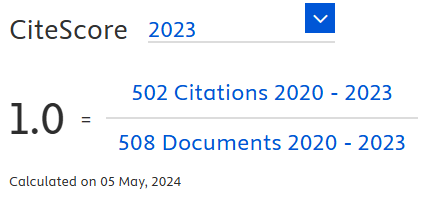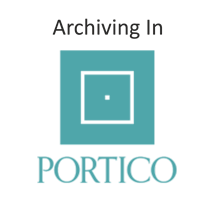Biological Performance of Laying Quail Supplemented with Alphitobius diaperinus Larval Meal
DOI:
https://doi.org/10.18006/2025.13(2).258.264Keywords:
Alphitobius diaperinus, Biological performance, Feed consumption, Quail, Shell thickness, Weight gainAbstract
The lesser mealworm (Alphitobius diaperinus) is an insect pest that can potentially serve as an important protein source in poultry diets. The high protein content of A. diaperinus larvae makes them a viable alternative for inclusion in quail feed during rearing. This study analyzed quail performance when their diet is supplemented with A. diaperinus larval meal in the rearing phase. This experiment utilized a completely randomized design with four treatments and five replications. The treatments involved replacing fish meal in the diet with A. diaperinus larval meal at 0%, 5%, 10%, and 15%. The results revealed that substituting A. diaperinus larval meal did not significantly affect (p>0.05) daily feed consumption, egg weight, or shell thickness. However, it significantly influenced body weight gain (p<0.05). While the weight gains at 10% and 15% larval meal inclusion were not substantially different, both were greater than those of the control group. Overall, substituting up to 15% of A. diaperinus larval meal in quail diets had no adverse effects on feed consumption, growth, egg weight, or shell thickness. Therefore, A. diaperinus larval meal may be a suitable alternative to fish meal in quail diets, offering economic benefits and opportunities for sustainable A. diaperinus larval culture.
References
Abadi, S., Huda, M., Jasmi, K.A., Noor, S.S.M., Safar, J., et al. (2018). Determination of the best quail eggs using simple additive weighting. International Journal of Engineering and Technology, 7(2), 225–230. DOI: https://doi.org/10.14419/ijet.v7i2.27.11967
Adámková, A., Kourimská, L., Borkovcová, M., Kulma, M., & Mlček, J. (2016). Nutritional values of edible Coleoptera (Tenebrio molitor, Zophobasmorio, and Alphitobius diaperinus) reared in the Czech Republic. Potravinarstvo, 10(1), 663–671. DOI: https://doi.org/10.5219/609
Akramullah, M., Dapawole, R.R., & Tiya, N.A.D. (2023). Physical Quality of Quail Eggs Fed with Added Snail Flour. Jurnal Sain Peternakan Indonesia, 18(1), 48–56. DOI: https://doi.org/10.31186/jspi.id.18.1.48-56
Bosch, G., Zhang, S., Oonincx, D. G. A. B., & Hendriks, W. H. (2014). Protein quality of insects as potential ingredients for dog and cat foods. Journal of Nutritional Science, 3, 1–4. DOI: https://doi.org/10.1017/jns.2014.23
Brandon, A.M., Gao, S. H., Tian, R., Ning, D., Yang S. S., Zhou, J., Wu, W. M., & Criddle, C S. (2018). Biodegradation of Polyethylene and Plastic Mixtures in Mealworms (Larvae of Tenebrio molitor) and Effects on the Gut Microbiome. Environmental Science & Technology, 52(11), 6526–6533. DOI: https://doi.org/10.1021/acs.est.8b02301
De Marco, M., Martínez, S., Hernandez, F., Madrid, J., Gai, F., Rotolo, L., et al. (2015). Nutritional value of two insect larval meals (Tenebrio molitor and Hermetia illucens) for broiler chickens: Apparent nutrient digestibility, apparent ileal amino acid digestibility, and apparent metabolizable energy. Animal Feed Science and Technology, 209, 211–218. DOI: https://doi.org/10.1016/j.anifeedsci.2015.08.006
De Souza, D.S., Calix, L.F.L., De Lemo, M.J., Da Silva, F.A., Pinho, T.P., Machado, C.A., Melo, I.A., & Togashi, C.K. (2016). Quail performance and egg quality at the endof production fed with varying levels of calcium. Semina Ciencias Agrarias, 37(4),2395–2406. DOI: https://doi.org/10.5433/1679-0359.2016v37n4Supl1p2395
Del Valle, E.E., Frizzo, L.S., Malmierca, M., Zbrun, M.V., Lax, P., & Doucet, M. E. (2016). Biological control of Alphitobius diaperinus with Steinernema rarum CUL and Heterorhabditis bacteriophora SMC and feasibility of application in rice hull. Journal of Pest Science, 89(1), 161–170. DOI: https://doi.org/10.1007/s10340-015-0669-8
Dzik, S., & Mituniewicz, T. (2020). Effectiveness of biocidal paint containing permethrin, ultramarine, and violet 23 against Alphitobius diaperinus (Panzer) (Coleoptera: Tenebrionidae) in laboratories and poultry houses. Animals, 10(9), 1–11. DOI: https://doi.org/10.3390/ani10091461
Emadinia, A., Toghyani, M., Foroozandeh, D., Tabeidian, S. A., & Ostadsharif, M. (2020). Effect of protein reduction and valine levels on growth performance, carcass characteristics, protein digestibility and SLC71 gene expression in Japanese quail. Livestock Science, 235, 1039-98. DOI: https://doi.org/10.1016/j.livsci.2020.103998
Gasco, L., Gai, F., Maricchiol, G., Genovese L., Ragonese, S., Bottari, T., & Caruso,G. (2018). Fishmeal Alternative Protein Sources for Aquaculture Feeds. In Feeds for the aquaculture sector: current situation and alternative sources (1-28). Springer Briefs in Molecular Science. Springer, Cham. https://doi.org/10.1007/978-3-319-77941-6_1. DOI: https://doi.org/10.1007/978-3-319-77941-6_1
Gül, E., Olgun, O., Yıldız, A., Tüzün, A. E., & Sarmiento-García, A. (2022). Use of Maca Powder (Lepidium meyenii) as Feed Additive in Diets of Laying Quails at Different Ages: Its Effect on Performance, Eggshell Quality, Serum, Ileum, and Bone Properties. Veterinary Sciences, 9(8), 1–17. DOI: https://doi.org/10.3390/vetsci9080418
Ibrahim, N.S., Sabic, E., & Abu-Taleb, A. M.(2018). Effect of inclusion irradiated olive pulp in laying quail diets on biological performance. Journal of radiation research and applied sciences, 11(4), 340–346. DOI: https://doi.org/10.1016/j.jrras.2018.06.004
Janssen, R.H., Vincken, J. P., Van Den Broe, L. A. M., Fogliano, V., & Lakemond, C. M. M. (2017). Nitrogen-to-Protein Conversion Factors for Three Edible Insects: Tenebrio molitor, Alphitobius diaperinus, and Hermetia illucens. Journal of agricultural and food chemistry, 65(11), 2275–2278. DOI: https://doi.org/10.1021/acs.jafc.7b00471
Józefia, D., Józefiak, A., Kierończyk, B., Rawski, M., Świątkiewicz S., Długosz, J., & Engberg, R. M. (2016). Insects - A Natural Nutrient Source for Poultry - A Review. Annals of Animal Science, 16(2), 297–313. DOI: https://doi.org/10.1515/aoas-2016-0010
Ketta, M., & Tůamová, E. (2016). Eggshell structure, measurements, and quality-affecting factors in laying hens: A review. Czech Journal of Animal Science, 61(7), 299–309. DOI: https://doi.org/10.17221/46/2015-CJAS
Khalifah, A., Abdalla, S., Rageb, M., Maruccio, L., Ciani, F., & El-Sabrout, K. (2023). Could Insect Products Provide a Safe and Sustainable Feed Alternative for the Poultry Industry? A Comprehensive Review. Animals, 13(9), 182-189. DOI: https://doi.org/10.3390/ani13091534
Khan, N., Mahajan, V., Singh, S., Gupta, A., & Reshi, P. A. (2023). Performance evaluation of commercial meat quail on supplementing growth promoter and performance enhancer. SKUAST Journal of Research, 25(4), 557-563. DOI: https://doi.org/10.5958/2349-297X.2023.00054.5
Kurečka, M., Kulma, M., Petříčko, D., Plachý, V., & Kouřimská, L. (2021). Larvae and pupae of Alphitobius diaperinus as promising protein alternatives. European Food Research and Technology, 247(10), 2527–2532. DOI: https://doi.org/10.1007/s00217-021-03807-w
Li, Z., Liu, R., Wang, X., Wu, H., Yi, X., Huang, L., & Qin, Q. (2023). Effects of melittin on laying performance and intestinal barrier function of quails. Poultry Science, 102(2), 1023–55. DOI: https://doi.org/10.1016/j.psj.2022.102355
Lotfi, E., Karimi, N., Kavan, P. B., & Sharifi, M. R. (2018). Influence of different dietary levels of energy and protein on reproductive and post-hatch growth performance in Japanese quails. Iranian Journal of Applied Animal Science, 8(1), 137–145.
Lyons, B. N., Crippen, T. L., Zheng, L., Teel, P. D., Swiger, S. L., & Tomberlin, J. K. (2017). Susceptibility of Alphitobius diaperinus in Texas to permethrin‐and β‐cyfluthrin‐treated surfaces. Pest Management Science, 73(3), 562-567. DOI: https://doi.org/10.1002/ps.4327
McCrickerd, K., & Forde, C. G. (2016). Sensory influences on food intake control: Moving beyond palatability. Obesity Reviews, 17(1), 18–29 DOI: https://doi.org/10.1111/obr.12340
Mutafela & Nasilele, R. (2015). High-Value Organic Waste Treatment via Black Soldier Fly Bioconversion. Onsite Pilot Study, 16, 1–64.
Reda, F. M., El-Kholy, M. S., Abd El-Hack, M. E., Taha, A. E., Othman, S. I., Allam, A. A., & Alagawany, M. (2020). Does the use of different oil sources in quail diets impact their productive and reproductive performance, egg quality, and blood constituents?. Poultry science, 99(7), 3511-3518. DOI: https://doi.org/10.1016/j.psj.2020.03.054
Renault, D., & Colinet, H. (2021). Differences in the susceptibility to commercial insecticides among populations of the lesser mealworm Alphitobius diaperinus collected from poultry houses in France. Insects, 12(4), 309. DOI: https://doi.org/10.3390/insects12040309
Roncolini, A., Milanović, V., Aquilanti, L., Cardinali, F., Garofalo, C., et al. (2020). Lesser mealworm (Alphitobius diaperinus) powder is a novel baking ingredient for manufacturing high-protein, mineral-dense snacks. Food Research International, 131, 109031. DOI: https://doi.org/10.1016/j.foodres.2020.109031
Rumbos, C.I., Karapanagiotidis, I. T., Mente, E., & Athanassiou, C. G. (2019). The lesser mealworm Alphitobius diaperinus: a noxious pest or a promising nutrient source? Reviews in Aquaculture, 11(4), 1418–1437 DOI: https://doi.org/10.1111/raq.12300
Sadarman, E., Irawati, I., Hidayati, H., Bahauddyin, B., Pandra, A., et al. (2022). Effect of Commercial Feed Substitution with BSF Maggot Flour (Hermetia illucens) on Laying Quail Production Performance. JITRO, 9(3), 581–590.
Silaban, E.M., Tafsin, M., & Hanafi, N. D. (2019). Free Choice Feeding on the Quality of Quail Eggs (Coturnix coturnix-japonica). Indonesian Journal of Agricultural Research, 2(2), 50–65. DOI: https://doi.org/10.32734/injar.v2i2.1154
Tabata, E., Kashimura, A., Wakita. S., Ohno M., Sakaguchi M., et al. (2017). Gastric and intestinal protease resistance of chicken acidic chitinase nominates chitin-containing organisms for alternative whole edible diets for poultry. Scientific Reports, 7(1), 1–11. DOI: https://doi.org/10.1038/s41598-017-07146-3
Urbanek, A.K., Rybak, J., Wróbel, M., Leluk, K., & Mirończuk, M. A. (2020). A comprehensive assessment of microbiome diversity in Tenebrio molitor fed with polystyrene waste. Environmental Pollution, 262, 1-10. DOI: https://doi.org/10.1016/j.envpol.2020.114281
Veldkamp, T., & Bosch, G. (2015). Insects: A protein-rich feed ingredient in pig and poultry diets. Animal Frontiers, 5(2), 45–50.
Vrabec,V., Kulma, M., & Cocan, D. (2015). Insects as an Alternative Protein Source for Animal Feeding: A Short Review about Chemical Composition. Bulletin UASVM Animal Science & Biotechnologies, 72(2), 116-126. DOI: https://doi.org/10.15835/buasvmcn-asb:11656
Widjastuti, T., Wiradimadja, R., & Rusmana, D. (2014). The Effect of Substitution of Fish Meal by Black Soldier Fly (Hermetia illucens) Maggot Meal in the Diet on Production Performance of Quail (Coturnix coturnix japonica). Journal of Animal Science, 57, 125–129.
Zhang, B., Liu, G., Ying, D., Sanguansri, L., & Augustin, M. A. (2017). Effect of extrusion conditions on the physico-chemical properties and in vitro protein digestibility of canola meal. Food Research International, 100, 658–664. DOI: https://doi.org/10.1016/j.foodres.2017.07.060
Downloads
Published
How to Cite
License
Copyright (c) 2025 Journal of Experimental Biology and Agricultural Sciences

This work is licensed under a Creative Commons Attribution-NonCommercial 4.0 International License.












